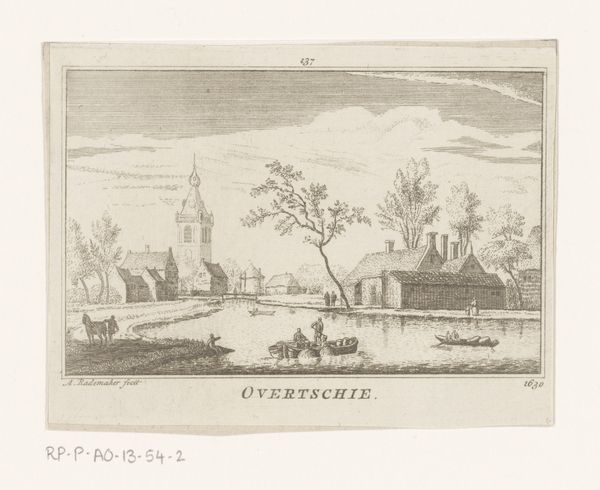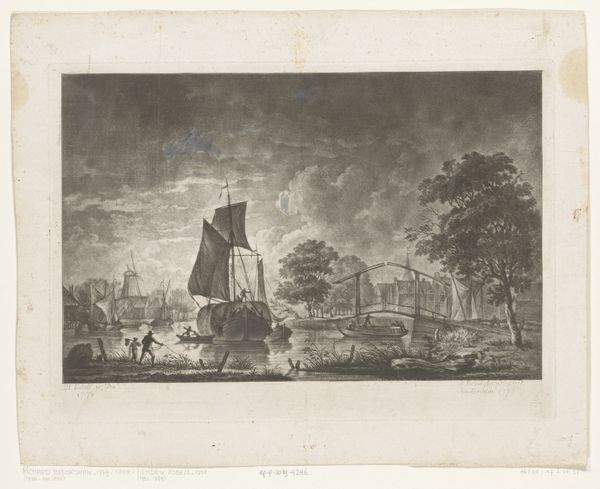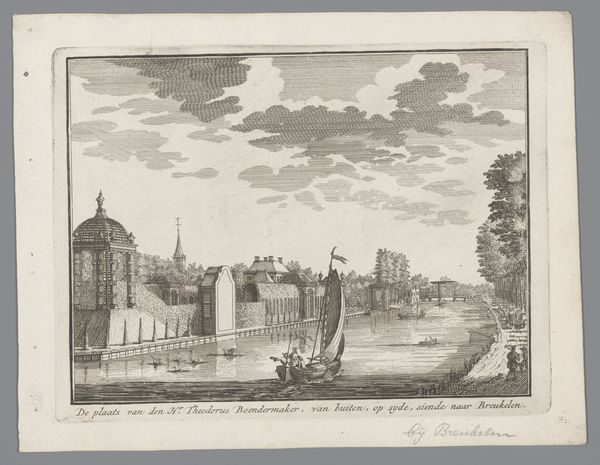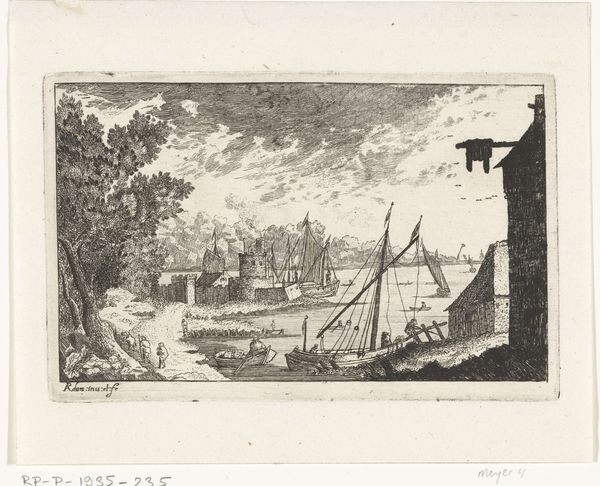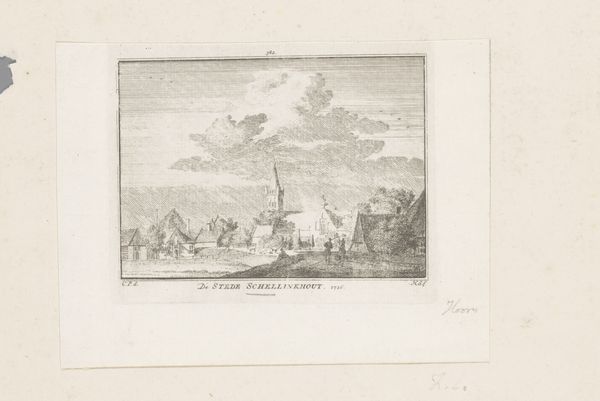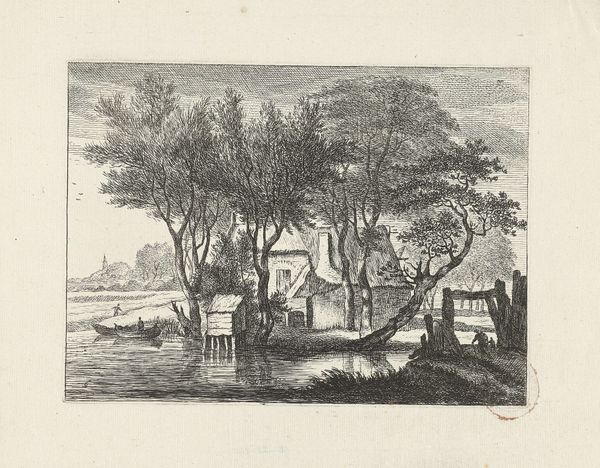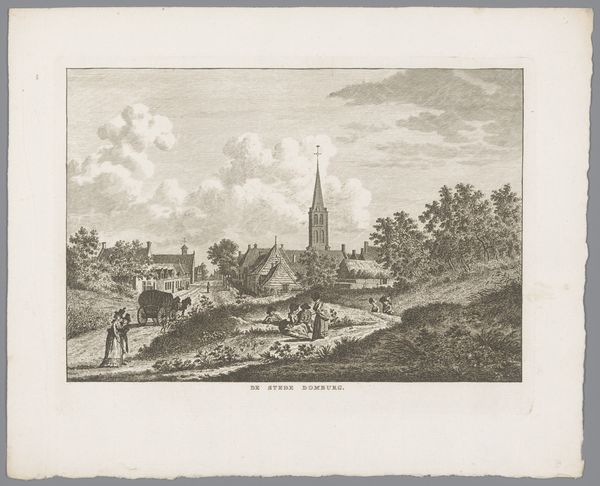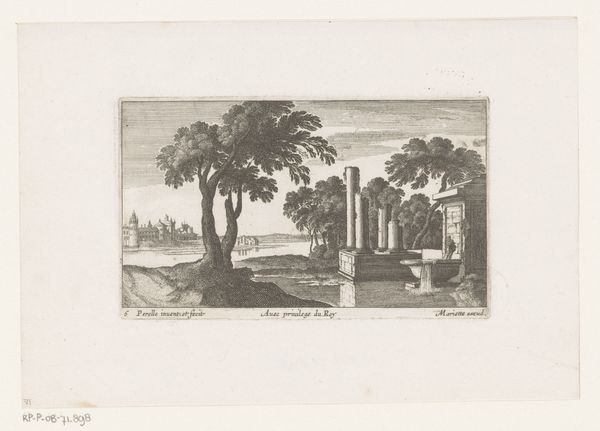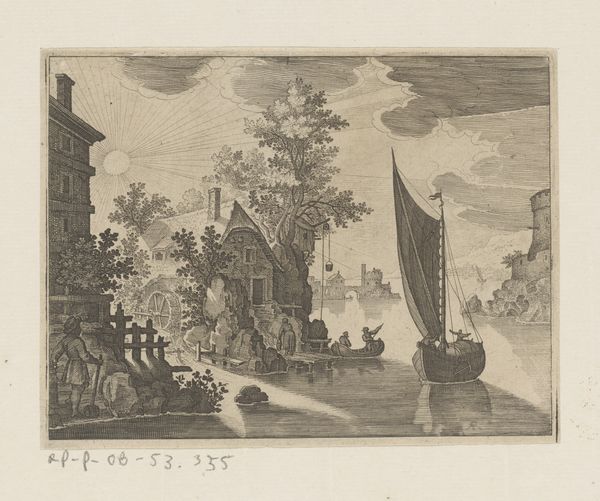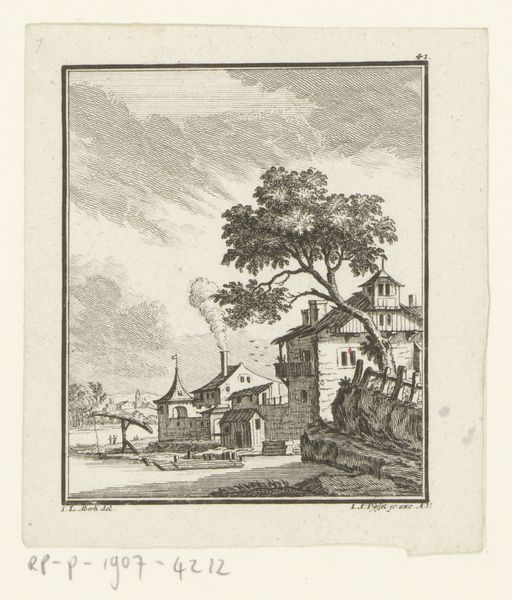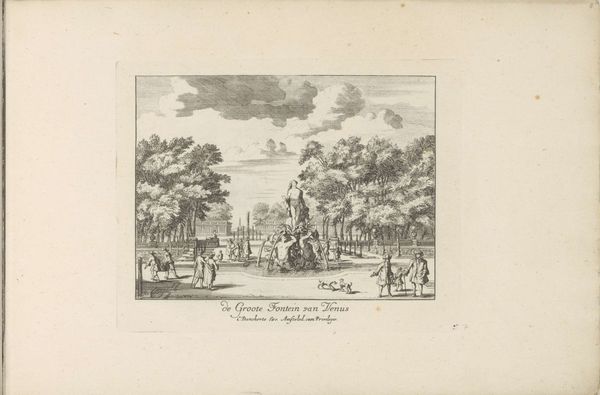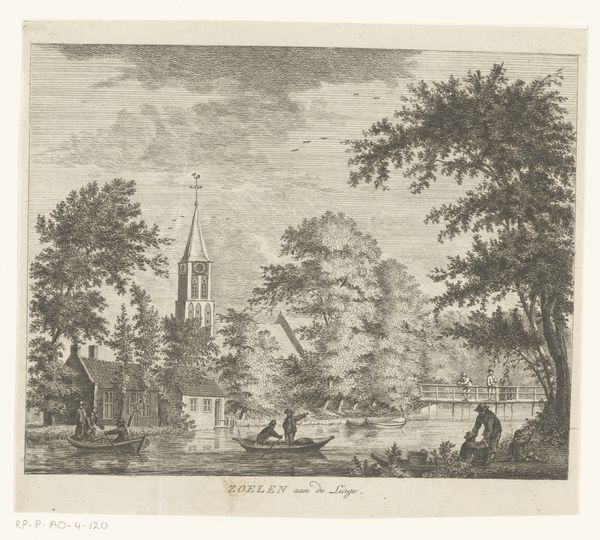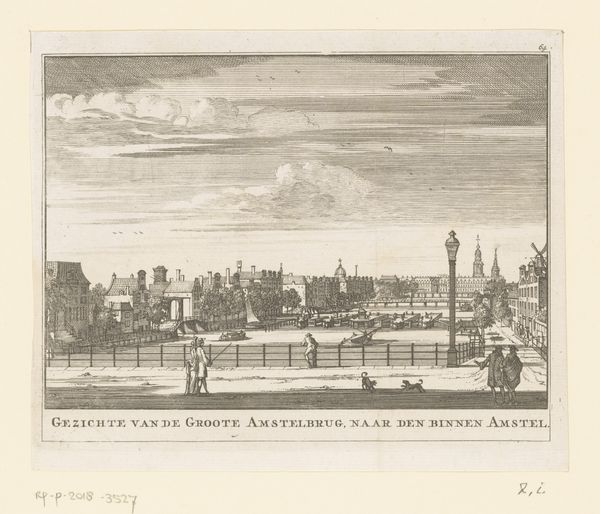
print, engraving
#
aged paper
#
light pencil work
#
dutch-golden-age
# print
#
old engraving style
#
sketch book
#
landscape
#
personal sketchbook
#
idea generation sketch
#
sketchwork
#
pen-ink sketch
#
sketchbook drawing
#
cityscape
#
storyboard and sketchbook work
#
engraving
#
realism
Dimensions: height 82 mm, width 110 mm
Copyright: Rijks Museum: Open Domain
Editor: So, here we have Hendrik Spilman’s “View of the Schermer Gate in Alkmaar, 1726,” an engraving from around 1746. It feels so orderly, so deliberately composed, almost like a stage set. What jumps out at you when you look at this piece? Curator: The careful detail is striking, isn’t it? But beyond the picturesque facade, consider the social implications of portraying a fortified gate like this. These structures were, fundamentally, about control and division. Who had access, who was excluded? The windmill, too, speaks to Dutch economic power, built on harnessing natural resources. How does this landscape participate in larger systems of power? Editor: I hadn’t thought of the gate in that way. More like a landmark… Curator: Exactly, it is easy to overlook that gates served to control populations, and their portrayal served to remind viewers of a society ordered on unequal terms. Look at the position of the people near the water; how do they relate to the architecture? The landscape then becomes a tableau of power relationships. Does seeing it this way shift your perception of the overall mood? Editor: It does. It's less idyllic and more... constructed, almost propagandistic in a subtle way. The details of everyday life are framed by systems of control. Curator: Precisely. And consider the artist’s perspective; from what social position did he view and record this scene? Spilman wasn't merely documenting a scene. He was reinforcing a particular worldview, one that celebrated Dutch prosperity and power, while perhaps eliding the complexities and inequalities of that society. Editor: Wow, I never would have considered all of that just from looking at a cityscape! It gives the print so much more weight, beyond just its aesthetic appeal. Curator: That’s the power of situating art within its historical and social fabric; it compels us to ask difficult but vital questions. We can learn so much when we look beyond the immediate image and interrogate what it conceals.
Comments
No comments
Be the first to comment and join the conversation on the ultimate creative platform.
